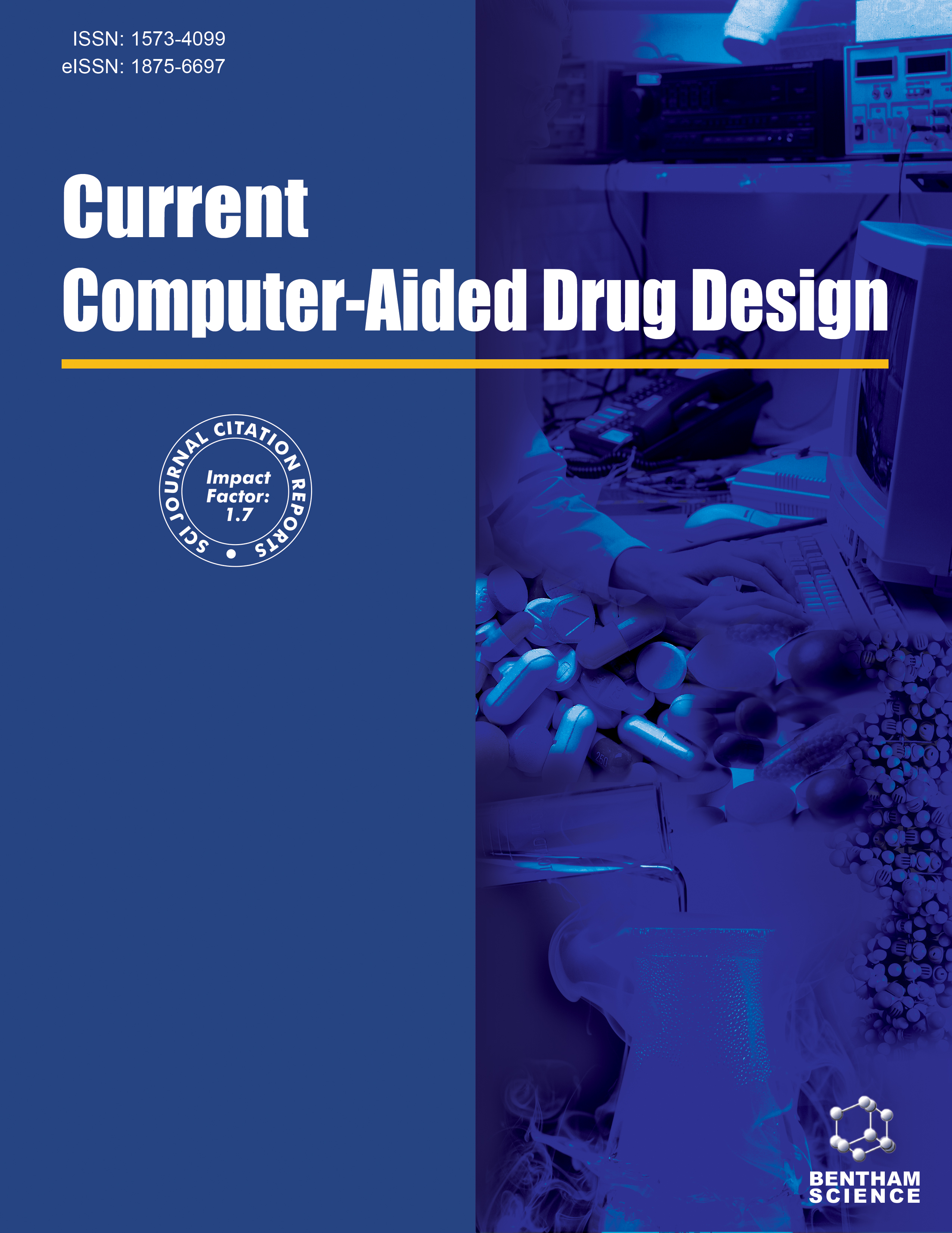- Home
- A-Z Publications
- Current Computer - Aided Drug Design
- Previous Issues
- Volume 3, Issue 4, 2007
Current Computer - Aided Drug Design - Volume 3, Issue 4, 2007
Volume 3, Issue 4, 2007
-
-
Editorial [Hot Topic:Multivariate QSAR Methods (Guest Editor: Peter P. Mager Co-Guest Editor: Matheus P. Freitas)]
More LessAuthors: Matheus P. Freitas and Peter P. MagerIncreasing efforts to estimate the activity or any other biological property of a given compound have been made since the advent of in silico approaches for drug design. In ligand-based QSAR/QSPR methodologies, descriptors are used to correlate samples set with the corresponding dependent variables (bioactivities, toxicity, etc.), in lieu of testing experimentally the response of a drug-like compound. A large amount Read More
-
-
-
Multivariate QSAR: From Classical Descriptors to New Perspectives
More LessThis review describes an overview of multivariate QSAR methods, from classical analysis to 3D approaches and new perspectives. Data exploration, multivariate regression and molecular descriptors are some topics also appraised here. Special emphasis is given to a recently developed 2D image-based approach, known as MIA-QSAR, which is an improved method in many aspects, namely computing cost, simplicity and pre Read More
-
-
-
Multivariate Modeling and Analysis in Drug Discovery
More LessAuthors: Tomasz Arodz and Arkadiusz Z. DudekMultivariate quantitative structure-activity relationship (QSAR) modeling, involving simultaneous modeling of activities towards several related endpoints, has emerged recently as an alternative to creating a group of separate models of each activity. The development of multivariate QSAR modeling has been driven by three factors. First, the number of aspects considered vital at earlier stages in the drug development pipeli Read More
-
-
-
Subset Selection and Docking of Human P2X7 Inhibitors
More LessThis review deals with three problems: the selection of suitable chemical descriptors from a pool of variables by a simultaneous one-regression/one-observation leaving-out resampling, the comparison of the results with a generalized-regression artificial-neural network, using an unconstrained genetic algorithm (GRNN), and the prediction of protein subdomains as potential molecular drug targets. As an example, Read More
-
-
-
The Recent Trend in QSAR Modeling - Variable Selection and 3D-QSAR Methods
More LessAuthors: Masamoto Arakawa, Kiyoshi Hasegawa and Kimito FunatsuQuantitative structure-activity relationships (QSAR) are one of the most important methodologies for rational drug design. In QSAR, compounds are represented by chemical structure descriptors, and then statistical models are built to predict biological activities of candidate structures. In this paper, two principal topics in QSAR, variable selection and 3D-QSAR, are picked up and are reviewed in recent trend. The aim of variabl Read More
-
-
-
Nonlinear SVM Approaches to QSPR/QSAR Studies and Drug Design
More LessAuthors: Jean-Pierre Doucet, Florent Barbault, Hairong Xia, Annick Panaye and Botao FanRecently, a new promising nonlinear method, the support vector machine (SVM), was proposed by Vapnik. It rapidly found numerous applications in chemistry, biochemistry and pharmacochemistry. Several attempts using SVM in drug design have been reported. It became an attractive nonlinear approach in this field. In this review, the theoretical basis of SVM in classification and regression is briefly described. Its applica Read More
-
-
-
A Review of Density Functional Theory Quantum Mechanics as Applied to Pharmaceutically Relevant Systems
More LessAuthors: Shenna M. LaPointe and Donald F. WeaverComputer-aided molecular design (CAMD) is becoming increasingly important to the drug discovery process. Although molecular mechanics (MM) has traditionally been the computational method of choice in medicinal chemistry, the MM method has significant deficiencies when used to study electron-based properties within the drug-receptor microenvironment. Quantum mechanical methods represent a solution to this proble Read More
-
-
-
QSAR as a Tool for the Development of Potent Antiproliferative Agents by Inhibition of Choline Kinase
More LessAuthors: M. C. Nunez, A. Conejo-Garcia, R. M. Sanchez-Martin, M. A. Gallo, A. Espinosa and J. M. CamposThe identification of the molecular components involved in the aberrant processes that control proliferation, differentiation and apoptosis, is necessary for the development of chemotherapeutic interventions to restore or to destroy selectively the transformed cells. The discovery of new chemotherapeutic agents is probably one of the most reliable ways to improve our success against cancer, and intelligent drug design is Read More
-
Volumes & issues
-
Volume 21 (2025)
-
Volume 20 (2024)
-
Volume 19 (2023)
-
Volume 18 (2022)
-
Volume 17 (2021)
-
Volume 16 (2020)
-
Volume 15 (2019)
-
Volume 14 (2018)
-
Volume 13 (2017)
-
Volume 12 (2016)
-
Volume 11 (2015)
-
Volume 10 (2014)
-
Volume 9 (2013)
-
Volume 8 (2012)
-
Volume 7 (2011)
-
Volume 6 (2010)
-
Volume 5 (2009)
-
Volume 4 (2008)
-
Volume 3 (2007)
-
Volume 2 (2006)
-
Volume 1 (2005)
Most Read This Month
Article
content/journals/cad
Journal
10
5
false
en


